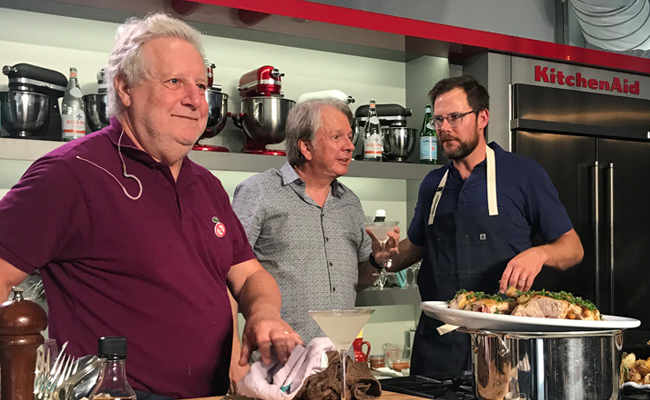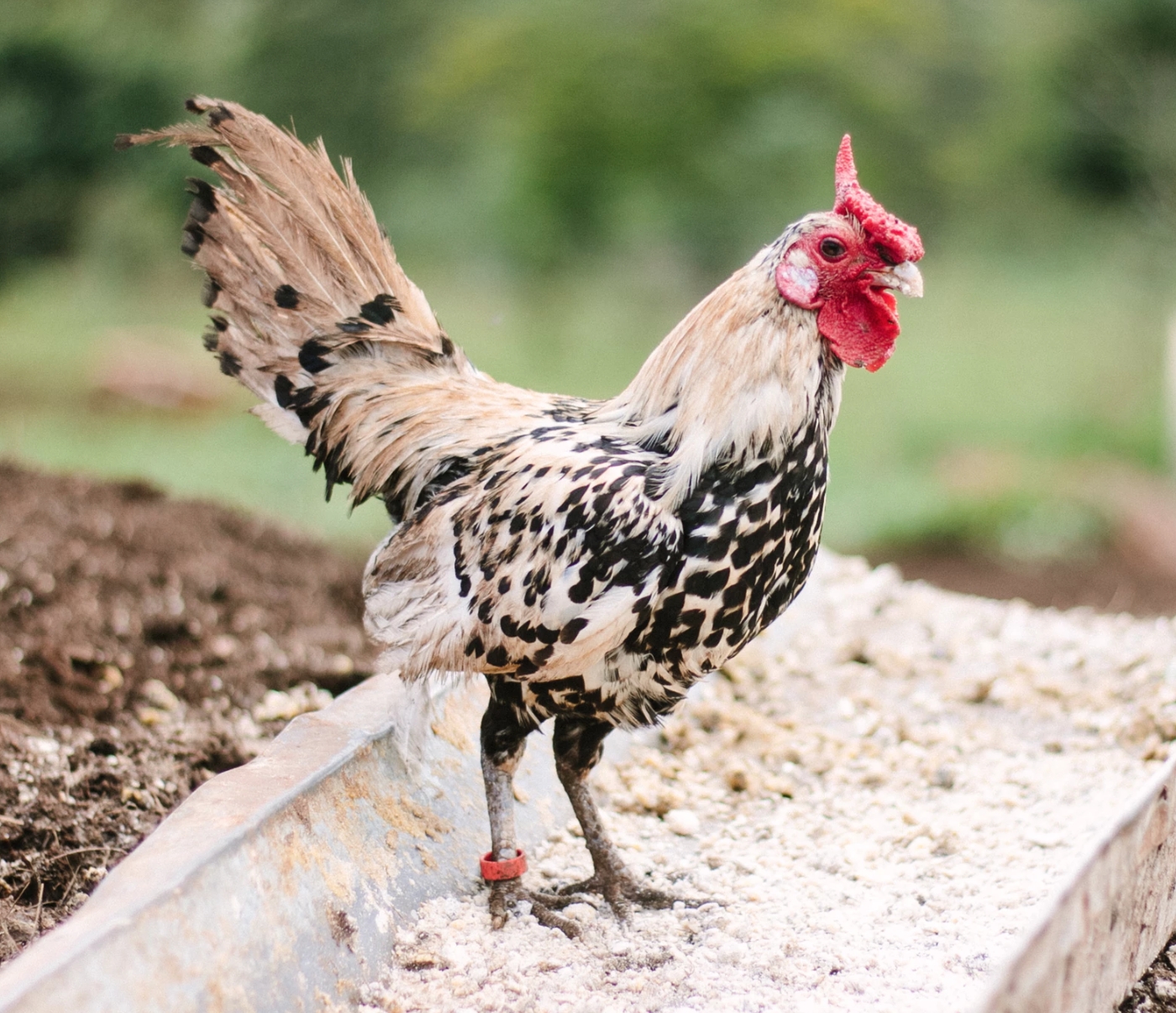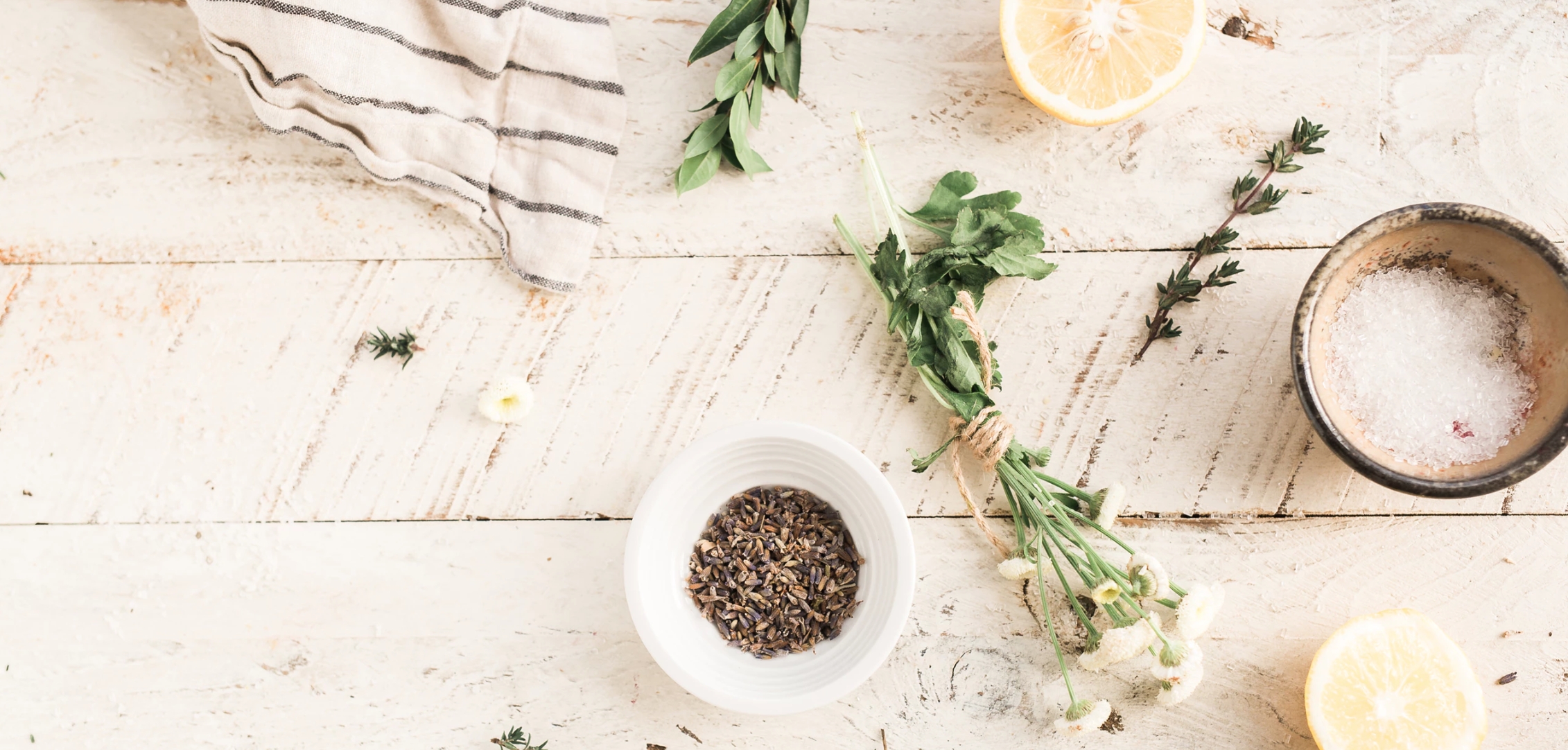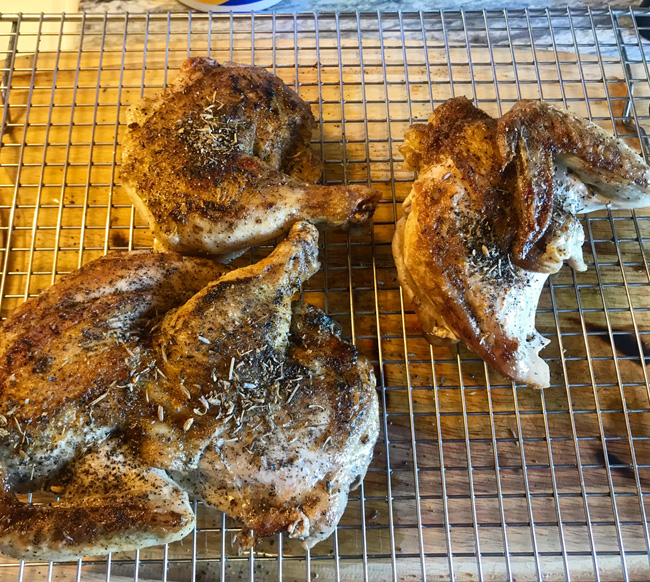
Earlier this month, I had the opportunity to attend the Aspen Food and Wine Classic, thanks to an invite from Blue Moon Brewing. Virtually every celebrity chef you’ve ever heard of was there in some capacity, and when I wasn’t walking around shoving food in my face, one of the cooking seminars I managed to attend was “Chicken, The Obi-Wan Waxman Way,” with Top Chef Masters competitor Jonathan Waxman (current owner of Barbuto in New York, among others).
Some people want to learn the exotic, fancy stuff. I just want to be able to cook a chicken so good that the breast meat is worth eating on its own, where I don’t take it off the bone to use in ravioli or chicken salad or enchiladas. I’m pretty good at a lot of things in the kitchen, but even after 10-plus attempts and plenty of readings on the subject, a non-bland chicken breast has thus far eluded me. I’ve cooked them plenty of times and the dark meat is always delicious, but, for the most part, they come out inferior to just buying a whole roasted chicken from Whole Foods or Costco (which are usually cheaper than the raw ones too, weirdly).
So I was ready when Waxman took the kitchen-stage (underneath a big tent, in front of a hundred or so people seated in folding chairs), joined by Hunter Lewis from Food and Wine, to talk about his childhood on a chicken farm in Sebastopol, in Northern California’s Sonoma County.
“Chickens are disagreeable creatures,” he began. “Which is part of why I don’t mind eating them.” Here are the rest of my notes on the seminar.
Waxman’s First Rule: “Get a good chicken.”

Waxman doesn’t really elaborate on this point, except to say that labels like “vegetarian fed, cage-free, pasture-raised, antibiotic free, non-GMO” etc. won’t guarantee you’re getting a “good chicken.” You kind of just have to try a few out and taste them. How to tell whether the chicken is bad or if you’ve just cooked it poorly, he doesn’t say.
I imagine the trial and error method is easier when you’re cooking a few hundred a day than it is for a home chef. However, as someone from the seafood council once told me about grading fish, which seems to apply equally here: just use your eyes (and nose, though if the meat smells strongly it’s a bad sign). We’re hardwired for this. If the meat still looks vibrant and tasty, you’re probably on the right track.
Waxman’s Second Rule: “Wash the chicken in the hottest water you can.”
Waxman says he’s anti the chickens shrink-wrapped in plastic, but whatever kind of chicken you get, wash it “as hot as you can stand.” Bottom line, you don’t want the chicken to be cold when you start cooking.
Waxman’s Interlude: Spatchcock? Yes, spatchcock.
Waxman doesn’t deliver this one as a “rule,” per se, but he does spatchcock the chicken he’s working with. That involves flipping the chicken onto the breast side and using kitchen shears to cut along either side of the backbone (“get as close to the backbone as possible”), removing the backbone (save it for stock, freeze it if you need), then flipping it back over and pressing down firmly on the breast like you’re giving it CPR to break the breastbone.
Waxman mentions one of his butchers who can prep “400 orders in 20 minutes.” That does seem like a lot.
Waxman’s Third Rule: “Season liberally.”

“Chances are, you’re not using enough salt,” Waxman says. You’ve probably heard it before, but it’s worth mentioning again, “the main reason restaurant food tastes better is the salt content.”
Waxman’s Fourth Rule: Make sure the skin is dry.
Waxman doesn’t mention it here, but in my experience, this usually involves a lot of paper towels.
How to move the chicken.
“Don’t use tongs, use a kitchen fork,” Waxman says. He’s using those big, two-pronged meat fork jobs for the demonstration. Point is, it’s easier not to damage the chicken if you’re stabbing it through the meat, rather than trying to grip the skin like tongs do.
Hot pan.
Waxman starts his chicken on the stove top, on a cast iron grill with canola oil, skin side down. He advises: “Put it in a pan big enough that it can move around in.” That way you can jiggle it a bit to make the skin release when it’s ready to.
How hot?
“You need to hear that sizzle when you put it in the pan, otherwise it’s not hot enough.” As for the oven, it’s going into? 425-degrees.
How long?
Obviously, this one depends on how big the chicken is. For the demo, Waxman is using a four-pound chicken. But after searing it on the pan for 5-10 minutes, he gives the second-most shocking advice of the demo: “It takes 10 to 12 minutes [in the oven] to cook a chicken.”
Who knew? I’ve cooked spatchcocked chicken for up to an hour plus.
Notes on equipment.
Waxman advises having two thermometers in the oven to know exactly how hot it is in certain places. “Get your oven calibrated,” he says. “It’s easy, I got my gas company to do it.”
When is it done?
This was the most shocking advice of the demo. Waxman does some back and forth with Hunter Lewis, trying to get Lewis to say what Waxman eventually does: “Don’t listen to the USDA [who advise 165 degree internal temperature for cooked chicken]. Get a good chicken and never cook it beyond 155 degrees.”
Actual gasps could be heard echoing through the tent. I admit, I too gasped.
Waxman also says “testing is super important,” though his testing method doesn’t involve an actual thermometer. He simply jabs his fork into the thickest part of the meat and then puts the fork up to his lips to see if the tongs are warm. Waxman banters throughout, asking himself rhetorical questions and offering anecdotes. Like that he used to be a trombone player, and got to play with Sammy Davis Jr., and got fired right after. “People ask me if cooking in a restaurant is easy. I’m like ‘Yeah, if you’re on like quaaludes or something.'”
I’m not entirely sure what this means, but I laughed.
Waxman’s, Uh… Sixth? Rule: Rest the meat.
We’ve all watched enough Top Chef by now to know resting your meat is important, right? So how long to rest your chicken? “At least 20 minutes at the restaurant,” Waxman says. This extra resting time probably accounts for the internal temperature discrepancy, but I’m not a food scientist.
For a sauce, Waxman makes a “salsa verdi” of garlic, anchovies, capers, chives and chili flakes. He advises taking the little green shoots out of the center of the garlic cloves. Does he smash the hell out of the garlic? You better believe it. He actually smashed the garlic so hard he broke the band of his watch. So that’s my advice, remove your watch before you smash the hell out of some garlic. He also cooks some potatoes (previously poached) in the chicken fat, which seems like an extremely good idea.
Sadly, as is the case at these seminars, I did not get to taste this chicken. Though Jonathan Waxman did wait around afterwards to patiently answer all of my follow-up questions.
Did it work?

I suppose the obvious question here is whether Jonathan Waxman’s chicken tips help me cook a better chicken. I got a small chicken from Gelson’s. Does Gelson’s have good chickens? I couldn’t tell you, I’ve only been in LA about a month. It looked like a good chicken. I spatchcocked it. I washed it under hot ass water. I dried it. I cooked it in my biggest cast iron pan with a little olive oil. About the only thing I did differently than the demo was that I salted it a day or two ahead of time. Pre-salting changed my life, and even though he didn’t say so, I feel like Jonathan Waxman would approve. I didn’t calibrate my oven, but according to my oven thermometer it was about 425 on the center of the top rack where I cooked it.
The verdict? I won’t pretend there weren’t one or two mildly bland bites of white meat, but there wasn’t nearly enough bland meat for ravs or enchiladas, and everything else came out just about perfect. For once, I made a home chicken that tasted better than a Costco chicken.
I think I have to score this round for Waxman. I’m glad he never made it as a tromboner.






